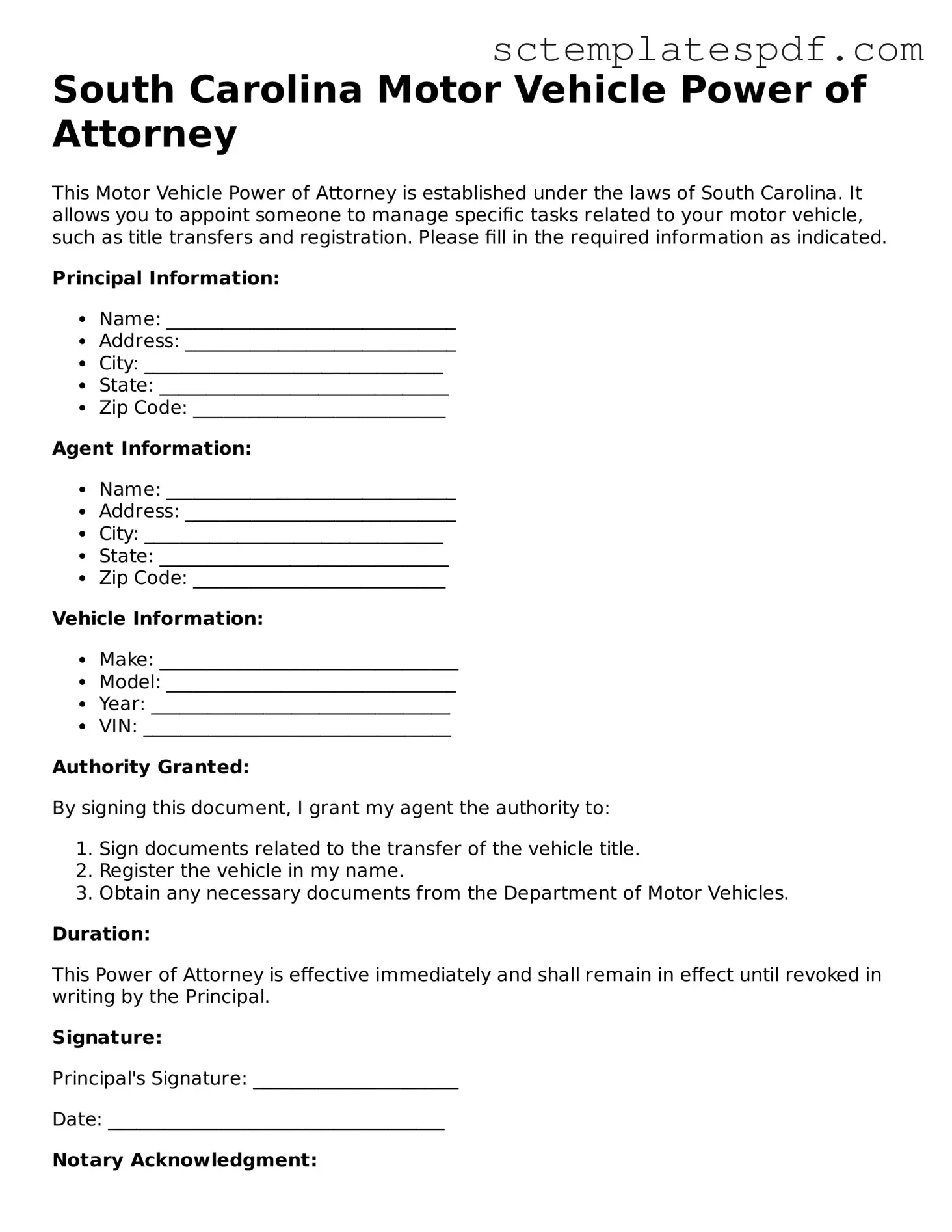Valid South Carolina Motor Vehicle Power of Attorney Document
The South Carolina Motor Vehicle Power of Attorney form is a legal document that allows one person to authorize another to handle specific motor vehicle-related transactions on their behalf. This can include tasks such as registering a vehicle, transferring ownership, or obtaining title documents. If you need to delegate these responsibilities, consider filling out the form by clicking the button below.
Fill Out Your Motor Vehicle Power of Attorney
